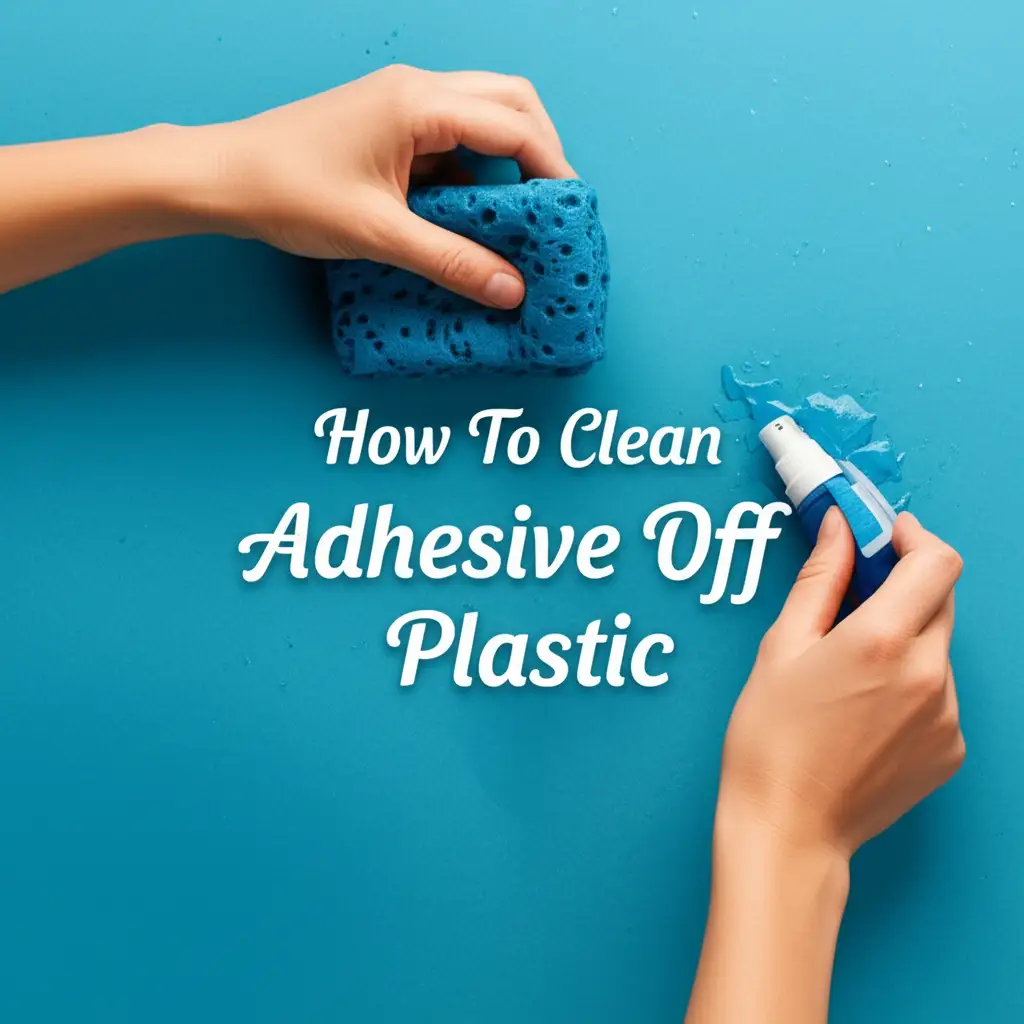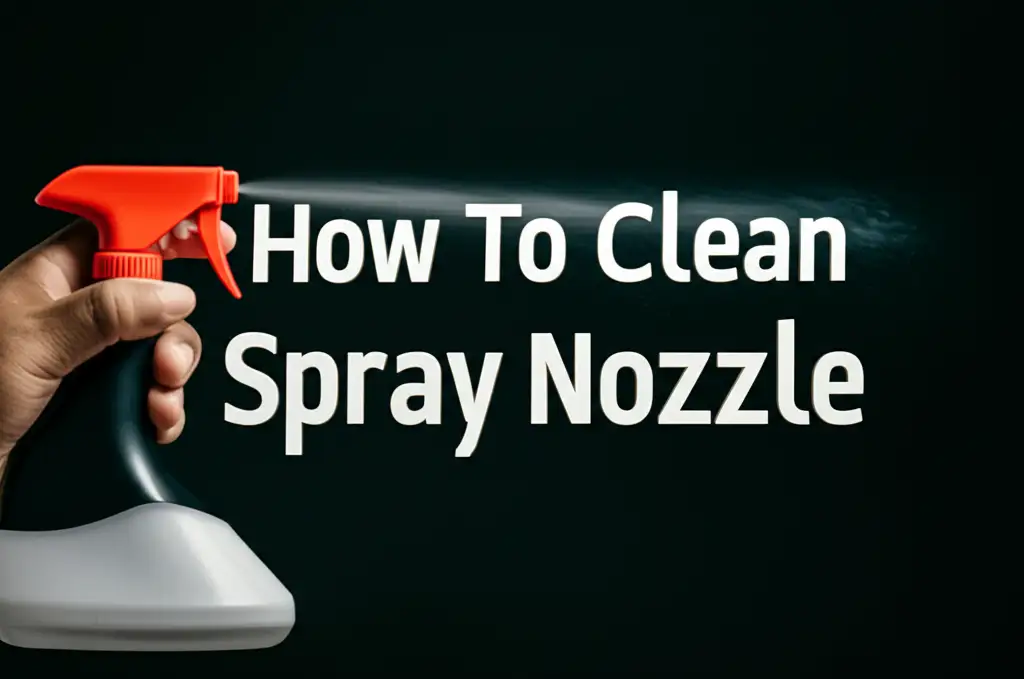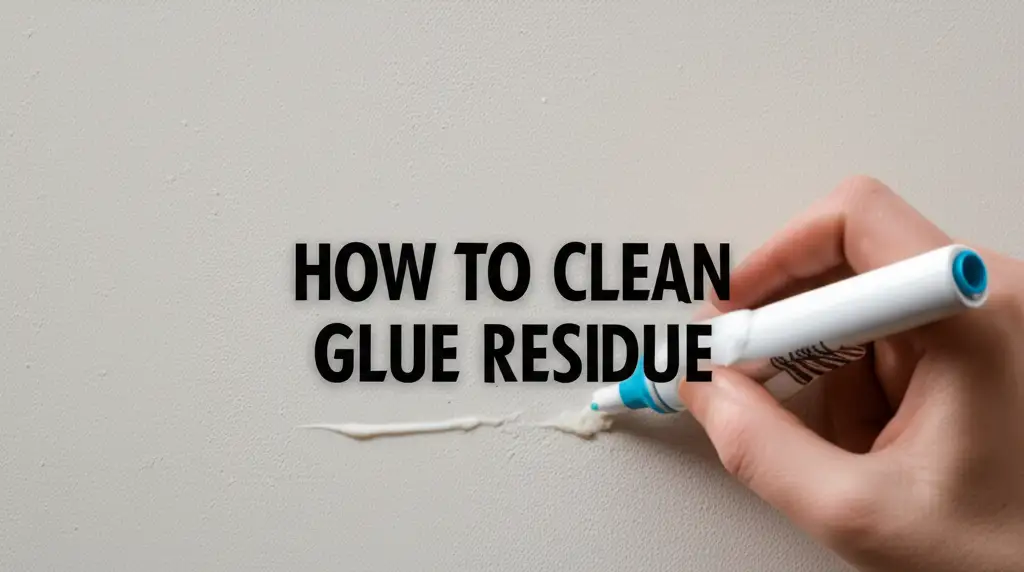· Cleaning Guides · 13 min read
How To Clean Gorilla Glue

Easily Clean Gorilla Glue: Your Complete Guide
Gorilla Glue offers incredible strength. This strength also makes it very challenging to remove once it dries. You might spill it on your favorite shirt or a new countertop. You could even get it on your skin. Knowing how to clean Gorilla Glue quickly and safely is important. This guide provides detailed steps. We cover different surfaces and situations.
Takeaway:
- Act fast on wet spills; dried glue needs more aggressive methods.
- Always prioritize safety with gloves and eye protection.
- Acetone is often effective but test it first on hidden areas.
- Scraping and abrasion work for cured glue on hard surfaces.
- Warm soapy water and patience help with skin contact.
Gorilla Glue is a powerful adhesive. It bonds strongly and expands as it cures. This makes removal difficult. You can clean Gorilla Glue effectively from many surfaces. Methods include using acetone, mineral spirits, or physical scraping. The best approach depends on the surface and whether the glue is wet or dry.
Understanding Gorilla Glue: Why It’s So Sticky
Gorilla Glue is famous for its incredible bonding power. It is a polyurethane-based adhesive. This glue reacts with moisture in the air. This reaction causes it to expand and cure. The cured glue forms a very strong, rigid bond. This bond makes it tough to remove from unwanted spots. When it dries, it becomes difficult to break down. You will need specific methods to loosen its grip. I understand how frustrating it is when this glue gets where it does not belong.
The glue starts as a liquid. It hardens into a solid mass. This process happens quickly. You must act fast if you spill it. Once cured, solvents like acetone work by dissolving the bond. Physical removal methods, such as scraping, break the bond mechanically. We must pick the right method for each surface. Different materials react differently to chemicals. Always consider the surface before you start cleaning. This understanding helps you choose the best removal strategy.
Safety Precautions When Cleaning Gorilla Glue
Cleaning Gorilla Glue requires caution. Safety must be your top priority. Always wear protective gloves. Disposable nitrile gloves work well. They protect your skin from direct contact with the glue. Gorilla Glue can irritate skin. It can also bond skin together. You should also wear eye protection. Safety glasses or goggles shield your eyes from splashes. This is especially important when using solvents.
Work in a well-ventilated area. Solvents like acetone produce fumes. These fumes can be strong and irritating. Open windows or use a fan. Good airflow prevents fume buildup. Test any cleaning solution in an inconspicuous spot first. This helps you avoid damage to the surface. Some chemicals can discolor or ruin certain materials. A small test area confirms safety. Follow these steps. You will protect yourself and your belongings.
First Aid for Gorilla Glue on Skin and Eyes
Accidentally getting Gorilla Glue on your skin or in your eyes needs immediate action. Do not panic. If glue gets on your skin, do not try to pull it apart forcefully. This can tear your skin. Instead, soak the affected area in warm, soapy water. Use a gentle scrubbing brush or a pumice stone. Rub the area gently. Acetone-based nail polish remover can help. Apply it to a cotton ball. Dab it on the glue spot. Be patient and repeat the process. The glue will eventually peel or flake off.
If Gorilla Glue gets in your eyes, flush them immediately with plenty of water. Do this for at least 15 minutes. Hold your eyelids open while flushing. Do not try to remove the glue with your fingers. Do not rub your eyes. Seek medical attention right away. Contact a doctor or emergency services. Time is critical for eye injuries. Always have a plan for accidental contact. Quick action minimizes harm.
Cleaning Wet Gorilla Glue Spills: Act Fast!
Time is your biggest ally when dealing with wet Gorilla Glue. The moment you notice a spill, act quickly. Do not let the glue cure. Use a clean cloth or paper towel. Gently blot the excess glue. Do not rub it into the surface. Rubbing can spread the glue further. It can also push it deeper into porous materials. This makes removal harder later. For small spills, simply wiping might be enough.
If the glue is still liquid, you might use a little mineral spirits or rubbing alcohol. Dab a small amount onto a clean cloth. Gently wipe the affected area. The solvent helps to thin the glue. It also makes it easier to remove. Always test the solvent on an hidden spot first. This checks for any adverse reactions on your surface. You want to avoid discoloration or damage. Quick action saves you a lot of trouble. This prevents the glue from setting permanently.
Removing Cured Gorilla Glue from Hard Surfaces: A Comprehensive Guide
Removing cured Gorilla Glue from hard surfaces is more challenging. Once the glue hardens, it forms a very strong bond. You cannot simply wipe it away. You will need stronger methods. These methods include chemical solvents and physical removal. The right approach depends on the specific surface material. Always consider the surface’s durability. Some surfaces are more sensitive to harsh chemicals or scraping.
Start with the least aggressive method. Gradually move to stronger ones if needed. Patience is key when dealing with cured glue. Repeat steps rather than using excessive force. This prevents damage to your item. Always ensure good ventilation when using solvents. Protecting your hands and eyes is also very important. A combination of methods often yields the best results.
Cleaning Gorilla Glue from Wood Surfaces
Gorilla Glue can cause problems on wood. Wood is a porous material. The glue can soak into the grain. To clean Gorilla Glue from wood, start by gently scraping. Use a plastic scraper or a credit card. You want to remove as much dried glue as possible. Be careful not to scratch the wood finish. For stubborn spots, try mineral spirits. Apply a small amount to a clean cloth. Dab it onto the glue. Let it sit for a few minutes. The mineral spirits soften the glue.
Then, gently scrape again. You might need to repeat this process several times. If mineral spirits do not work, consider a very fine-grit sandpaper. Lightly sand the affected area. Always sand with the wood grain. This minimizes visible scratches. After removing the glue, clean the area. You might need to re-stain or re-seal the wood. This restores its original appearance. Be patient. This process takes time.
Tackling Gorilla Glue on Plastic
Cleaning Gorilla Glue from plastic surfaces needs care. Some solvents can damage or melt plastic. Test your chosen solvent on an inconspicuous area first. Rubbing alcohol is often a safe starting point for plastic. Apply a small amount to a clean cloth. Gently rub the glue spot. This can soften the glue. Then, you can try to scrape it off. Use a plastic scraper or your fingernail. Avoid metal tools. Metal can scratch the plastic.
For more stubborn glue, try mineral spirits. Again, test it on a hidden spot. Apply it sparingly. Let it sit for a very short time. Wipe it away quickly. If the plastic is durable, you might use acetone. Acetone is very strong. It can dissolve certain plastics. Use it only as a last resort. Use a cotton swab to apply a tiny amount. Work quickly and wipe it off immediately. You can find more tips on how to clean glue off plastic surfaces to avoid damage and ensure effective removal. Learn more about cleaning glue off plastic.
Removing Gorilla Glue from Glass
Glass surfaces show every imperfection. Removing Gorilla Glue from glass requires precision. Start by gently scraping the bulk of the glue. Use a razor blade scraper. Hold the blade at a shallow angle. This prevents scratching the glass. Be careful not to apply too much pressure. Always scrape in one direction. After scraping, you will likely have a thin residue.
For the residue, use acetone. Acetone will not harm glass. Apply it to a cotton ball or a clean cloth. Press it onto the remaining glue. Let it soak for a few minutes. The acetone softens the glue. Then, you can wipe it away. You might need to repeat this step. Finish by cleaning the glass with glass cleaner. This removes any streaks or haziness. You can explore more strategies for cleaning glue off glass effectively. Discover how to clean glue off glass.
Dealing with Gorilla Glue on Metal and Ceramic
Metal and ceramic surfaces are generally more resistant. This makes cleaning Gorilla Glue easier. For cured glue, you can often start with physical removal. Use a stiff brush or a plastic scraper. You can also use a razor blade scraper on these surfaces. Apply steady, firm pressure. Be careful not to damage any delicate finishes. If the glue is thick, score it first. This helps solvents penetrate deeper.
Acetone is usually very effective on metal and ceramic. Apply a generous amount to a cloth. Place the cloth over the glue. Let it sit for several minutes. The acetone will soften the glue. You can then scrape or wipe it away. Mineral spirits also work well. For very stubborn spots, a wire brush or fine steel wool can be used on plain metal. Always avoid abrasive tools on polished or painted metal. You want to preserve the finish.
Getting Gorilla Glue Out of Fabric and Carpet
Gorilla Glue spills on fabric or carpet are tricky. These materials are porous. The glue can penetrate deeply. If the glue is still wet, blot it immediately. Do not rub. Rubbing pushes the glue deeper. For wet glue, try denatured alcohol or rubbing alcohol. Apply it to a clean cloth. Dab the glue stain. Work from the outside in. This prevents spreading the stain.
For dried Gorilla Glue on fabric or carpet, you need patience. First, try to pick off any loose pieces. Use tweezers if necessary. Then, you can try acetone. Acetone can damage some synthetic fabrics. Always test it on an inconspicuous area first. Apply acetone to a cotton swab. Dab the glue spot. Do not saturate the fabric. The acetone will soften the glue. Gently scrape with a blunt knife or your fingernail. Repeat this process until the glue breaks down. After glue removal, clean the area with a fabric cleaner. You can also learn how to clean glue residue from surfaces. Get tips on cleaning glue residue.
Essential Tools and Solvents for Gorilla Glue Removal
Having the right tools and solvents makes cleaning Gorilla Glue much easier. A good set of supplies prepares you for any spill. Here are the essential items I recommend keeping on hand:
- Acetone (Nail Polish Remover): This is one of the most effective solvents for cured Gorilla Glue. It works by dissolving the glue’s bond. Make sure your nail polish remover contains real acetone.
- Mineral Spirits: This solvent is less aggressive than acetone. It is a good choice for delicate surfaces. It softens glue without harsh evaporation.
- Rubbing Alcohol (Isopropyl Alcohol): This works well on wet glue. It also helps soften cured glue on some surfaces. It is often safer for plastics and fabrics.
- Plastic Scrapers/Credit Cards: These are great for scraping off glue. They reduce the risk of scratching surfaces. Use them for both wet and cured glue.
- Razor Blade Scraper: Essential for glass and very hard surfaces. Use it carefully at a shallow angle. This tool offers precise removal.
- Clean Cloths/Paper Towels: Absorb wet glue spills. Apply solvents effectively. Always use fresh cloths to avoid spreading glue.
- Cotton Swabs/Balls: Perfect for applying solvents to small, precise areas. They control the amount of liquid. This prevents oversaturation.
- Protective Gloves: Essential for skin protection. Gorilla Glue can bond skin quickly. Solvents can also irritate skin.
- Safety Glasses: Protect your eyes from splashes. Solvents and flying debris pose risks.
- Fine-Grit Sandpaper: Useful for removing stubborn residue from wood. Always sand with the grain.
- Hair Dryer: Heat can sometimes soften cured glue. Apply low heat to the glue spot. Then try scraping. Be careful not to overheat the surface.
These tools and solvents give you a comprehensive arsenal. You will be ready to tackle any Gorilla Glue mishap. You might also find common methods to clean super glue useful, as Gorilla Glue shares some properties with other strong adhesives. Explore methods to clean super glue.
Preventing Gorilla Glue Mishaps: Best Practices
Preventing spills is always better than cleaning them up. You can take steps to avoid Gorilla Glue mishaps. First, prepare your workspace. Lay down newspapers or cardboard. This protects your work surface from drips and spills. Cover a larger area than you think you need. Work in a clutter-free space. This prevents accidental knocks.
Wear old clothes or an apron. Gorilla Glue can permanently stain fabric. Protective gear saves your good clothing. Use the glue sparingly. You do not need a lot of Gorilla Glue for a strong bond. Excess glue often leads to spills. Apply it directly to one surface. Join the pieces immediately. Recap the bottle tightly after use. This prevents accidental spills. Store the glue upright in a cool, dry place. Proper storage keeps the glue fresh. It also prevents leaks. A small amount of preparation saves you a lot of cleaning time later.
FAQ Section
Q1: Can I use hot water to clean Gorilla Glue?
Hot water alone usually will not dissolve cured Gorilla Glue. It might soften it slightly. This makes scraping easier. Warm soapy water helps when glue is on skin. It aids in gentle scrubbing. For major spills, you need stronger solvents.
Q2: Is Gorilla Glue removable from all surfaces?
Removing Gorilla Glue is possible from most surfaces. Success depends on the surface material and glue curing time. Porous materials like fabric or unfinished wood are harder. Non-porous surfaces like glass or metal are generally easier. Always test cleaning methods first.
Q3: What is the best way to remove Gorilla Glue from skin?
Do not pull or force skin apart. Soak the affected skin in warm, soapy water. Gently rub with a pumice stone or soft brush. Acetone-based nail polish remover can also help. Apply it to a cotton ball. Dab the glue. Patience is key.
Q4: Will vinegar clean Gorilla Glue?
Vinegar is generally not effective for removing Gorilla Glue. Gorilla Glue is a strong polyurethane adhesive. Vinegar is an acid. It does not break down the chemical bonds of Gorilla Glue. You need stronger solvents like acetone or mineral spirits.
Q5: How long does Gorilla Glue take to cure completely?
Gorilla Glue usually dries to the touch in 10-45 minutes. It reaches full cure strength in 24 hours. Humidity affects curing time. Higher humidity can speed up the process. Always check the product label for specific instructions.
Q6: Can I use sandpaper on Gorilla Glue?
Yes, sandpaper can remove cured Gorilla Glue. It works best on very durable surfaces like wood or metal. Use fine-grit sandpaper. Always sand gently to avoid damaging the surface. This is a physical removal method.
Conclusion
Cleaning Gorilla Glue can seem daunting. It is a powerful adhesive. But with the right approach, you can effectively remove it. Always prioritize safety first. Wear protective gear. Choose your cleaning method carefully. The best method depends on the surface. It also depends on whether the glue is wet or dry. Act quickly for wet spills. For cured glue, be patient. You might need multiple attempts.
We covered techniques for skin, fabric, wood, and glass. We discussed using common solvents like acetone and mineral spirits. Remember to test any cleaner on a hidden spot first. This simple step prevents further damage. By following these guidelines, you can restore your items. You can keep your surfaces clean. Take a deep breath. You are now prepared to tackle any Gorilla Glue mishap. A clean home is a happy home.
- Gorilla Glue removal
- glue cleaning tips
- adhesive stain removal
- sticky residue solutions
- DIY cleaning




